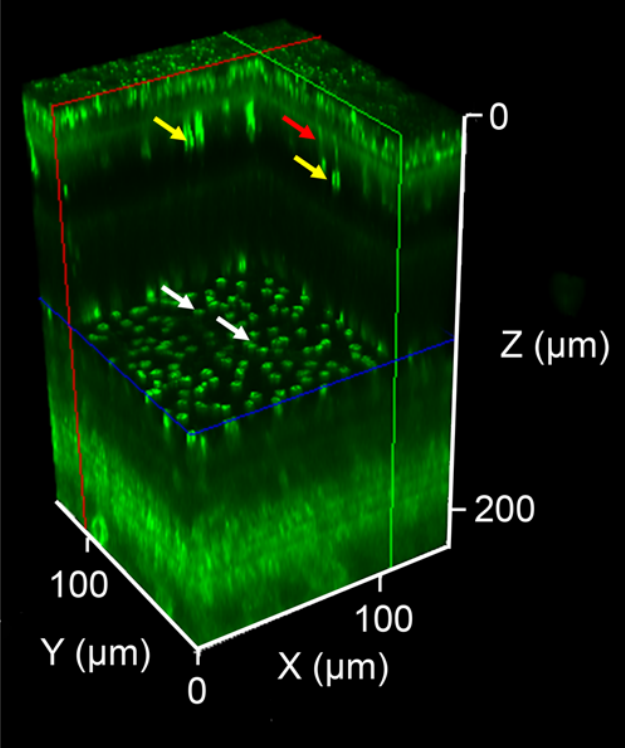The “Two photon vision and two photon eye imaging (2×2-PhotonVis)” project was carried out within IChF PAN (Instytut Chemii Fizycznej PAN) and later ICTER from December 2017 to September 2022. The main goal of this project was to develop novel and original optical methods and instrumentation for functional testing of human and animal vision, using two-photon absorption and two-photon excited fluorescence processes.
The project broadened our knowledge about the optical properties of human and rodent retina and its susceptibility to non-linear optical processes of two-photon isomerization of rhodopsin chromophores and two-photon excitation fluorescence in RPE cells. The project resulted in nine papers published in JCR-indexed journals.

The POIR.04.04.00-00-3D47/16 project is carried out within the TEAM TECH programme of the FNP Foundation for Polish Science co-financed by the European Union under the European Regional Development Fund.
Author: Slawomir Tomczewski, PhD
Grant awardee and project leader: Prof. Maciej Wojtkowski
Website of the #TeamTech project: https://2photon.icter.pl/
Related paper: JCI Insight – Two-photon imaging of the mammalian retina with ultrafast pulsing laser
Two-photon imaging of the mammalian retina with ultrafast pulsing laser
Abstract
Noninvasive imaging of visual system components in vivo is critical for understanding the causal mechanisms of retinal diseases and for developing therapies for their treatment. However, ultraviolet light needed to excite endogenous fluorophores that participate in metabolic processes of the retina is highly attenuated by the anterior segment of the human eye. In contrast, 2-photon excitation fluorescence imaging with pulsed infrared light overcomes this obstacle. Reducing retinal exposure to laser radiation remains a major barrier in advancing this technology to studies in humans. To increase fluorescence intensity and reduce the requisite laser power, we modulated ultrashort laser pulses with high-order dispersion compensation and applied sensorless adaptive optics and custom image recovery software and observed an over 300% increase in fluorescence of endogenous retinal fluorophores when laser pulses were shortened from 75 fs to 20 fs. No functional or structural changes to the retina were detected after exposure to 2-photon excitation imaging light with 20-fs pulses. Moreover, wide bandwidth associated with short pulses enables excitation of multiple fluorophores with different absorption spectra and thus can provide information about their relative changes and intracellular distribution. These data constitute a substantial advancement for safe 2-photon fluorescence imaging of the human eye.
Authors:
Grazyna Palczewska, Patrycjusz Stremplewski, Susie Suh, Nathan Alexander, David Salom, Zhiqian Dong, Daniel Ruminski, Elliot H. Choi, Avery E. Sears, Timothy S. Kern, Maciej Wojtkowski, Krzysztof Palczewski

